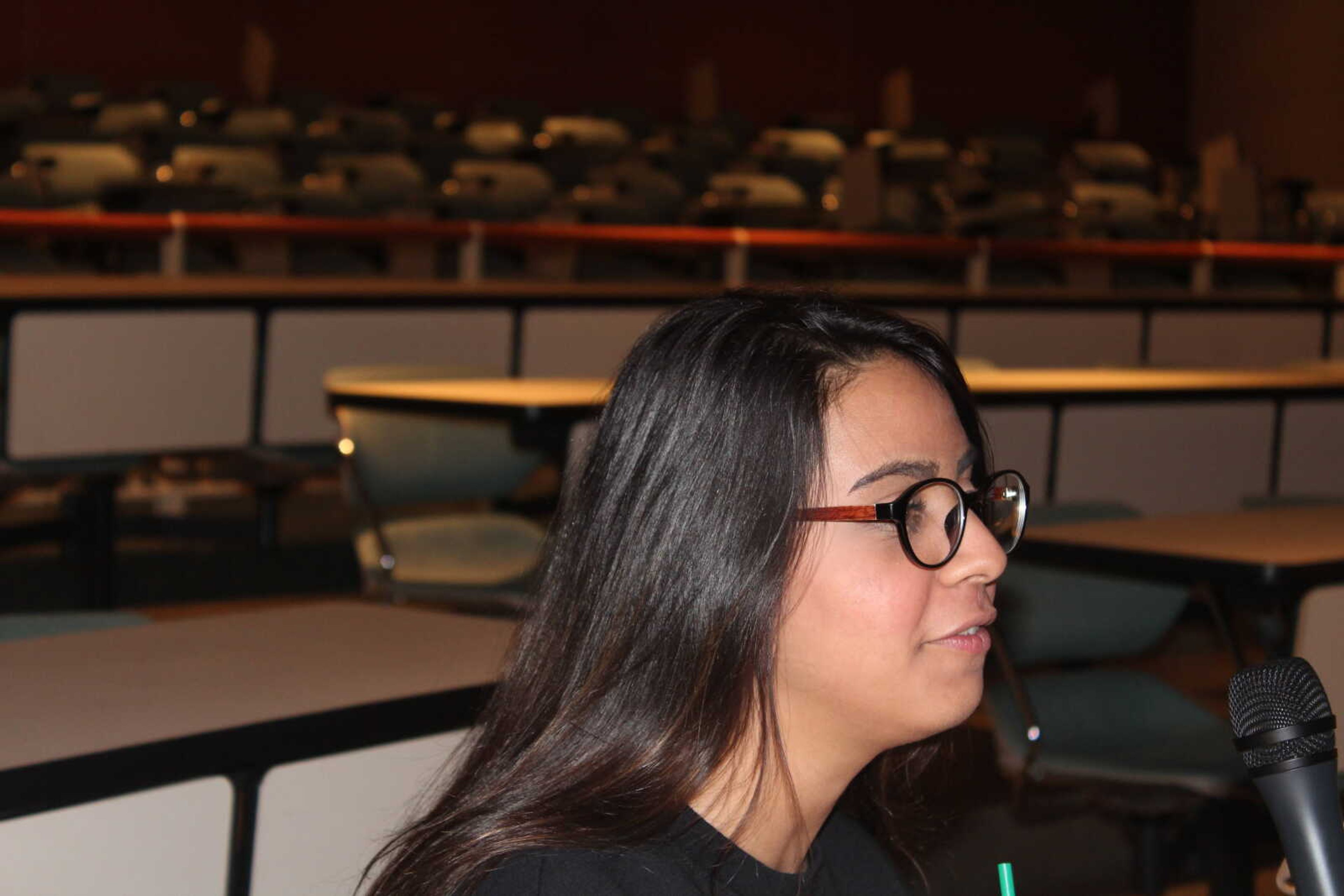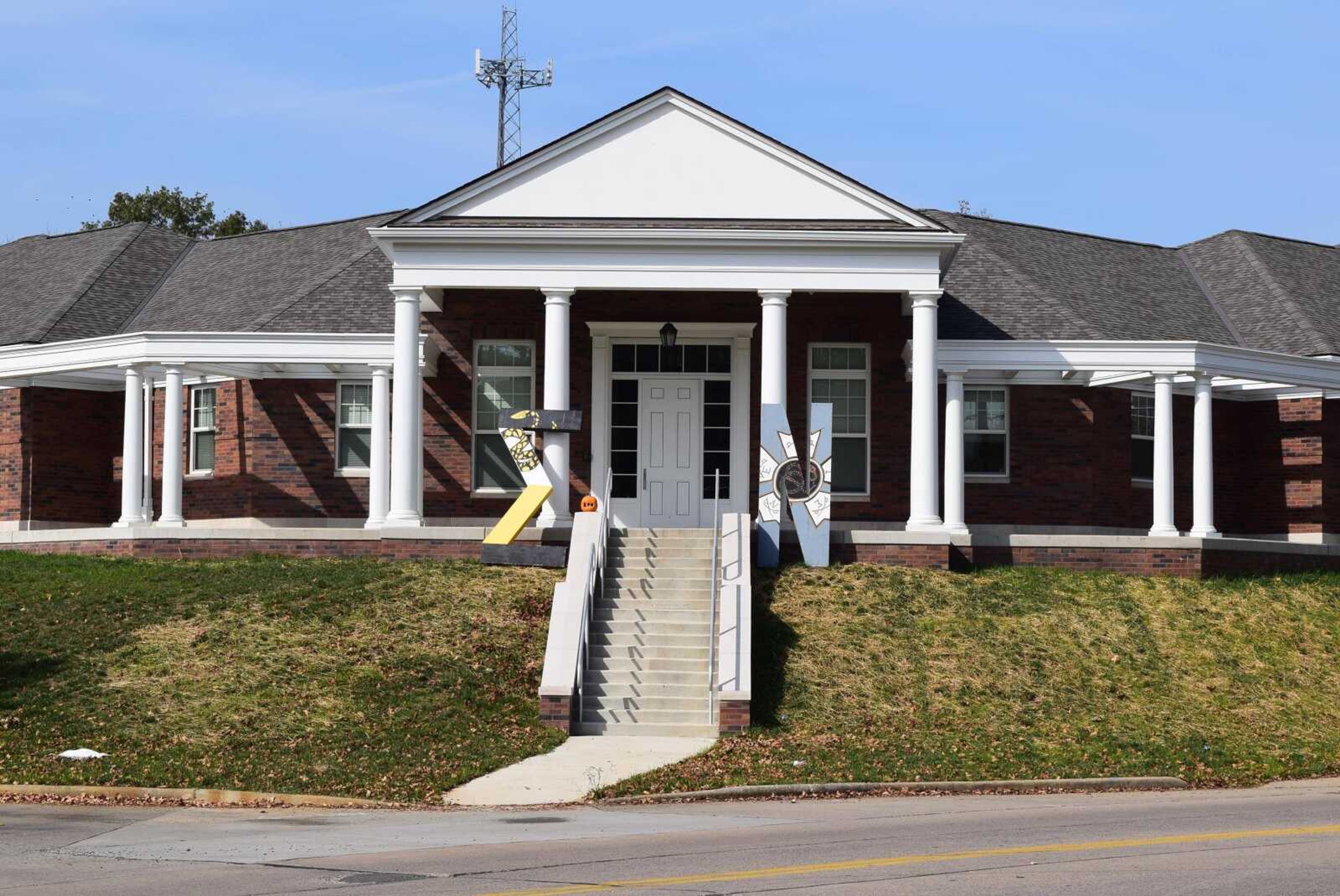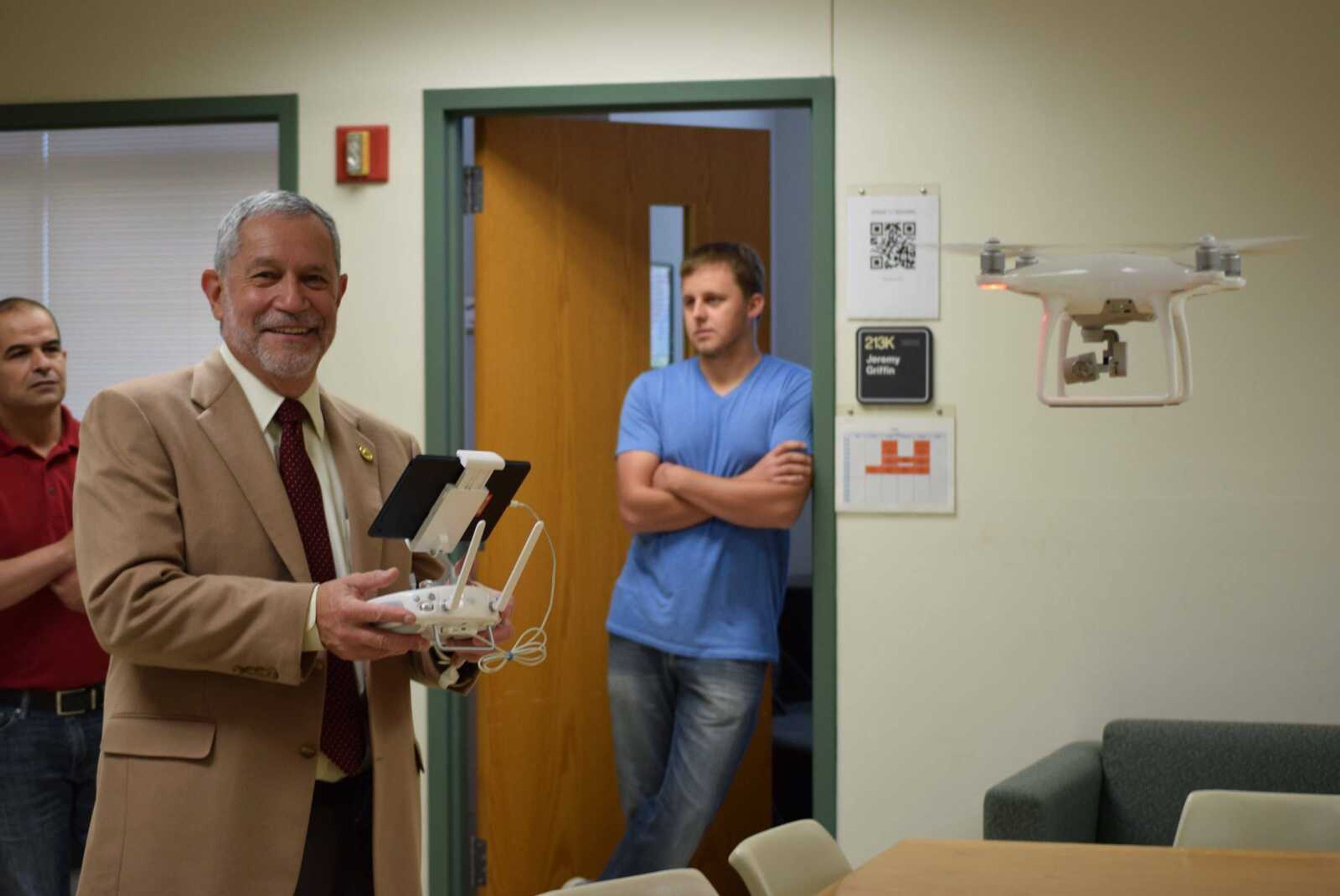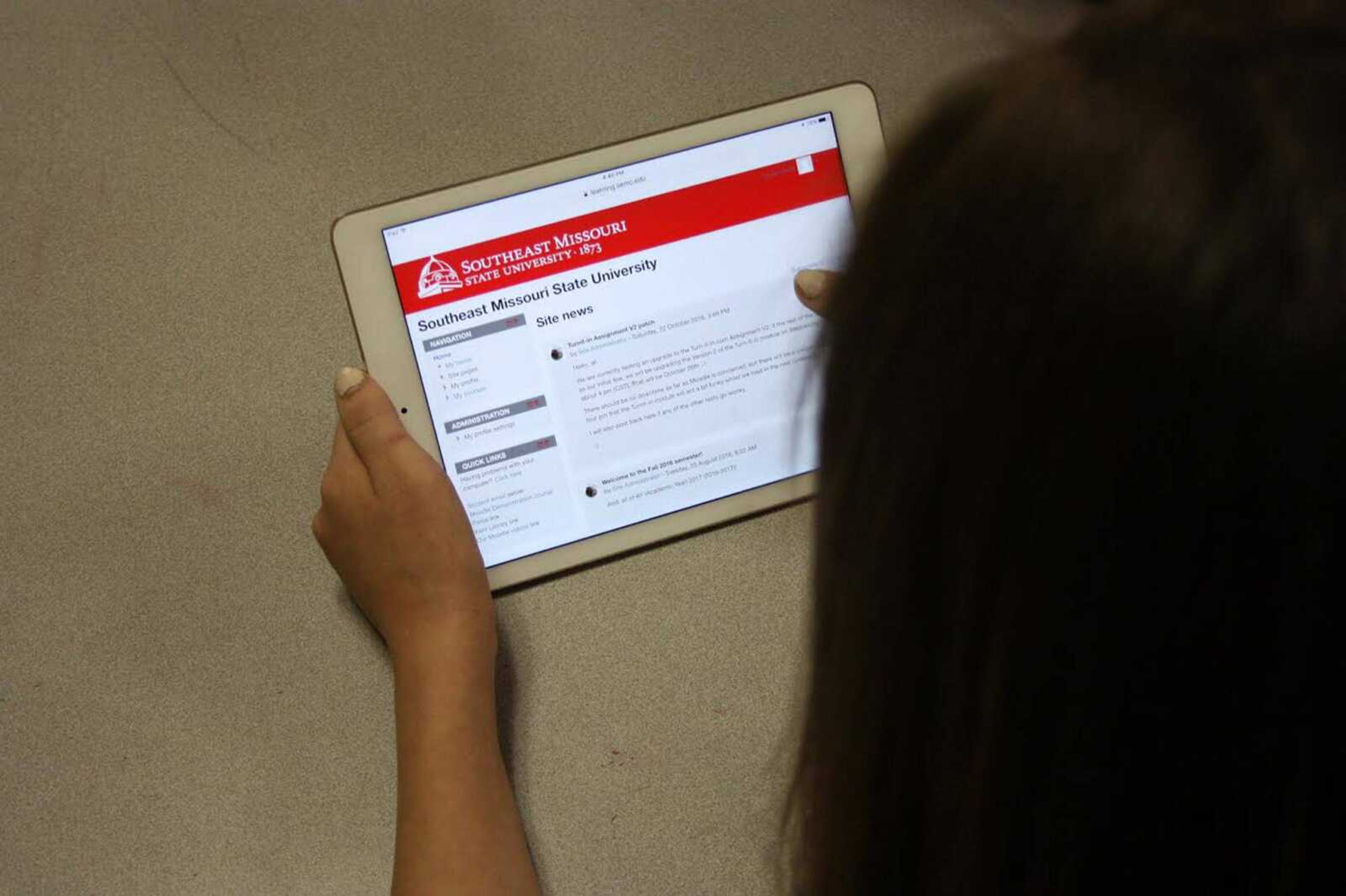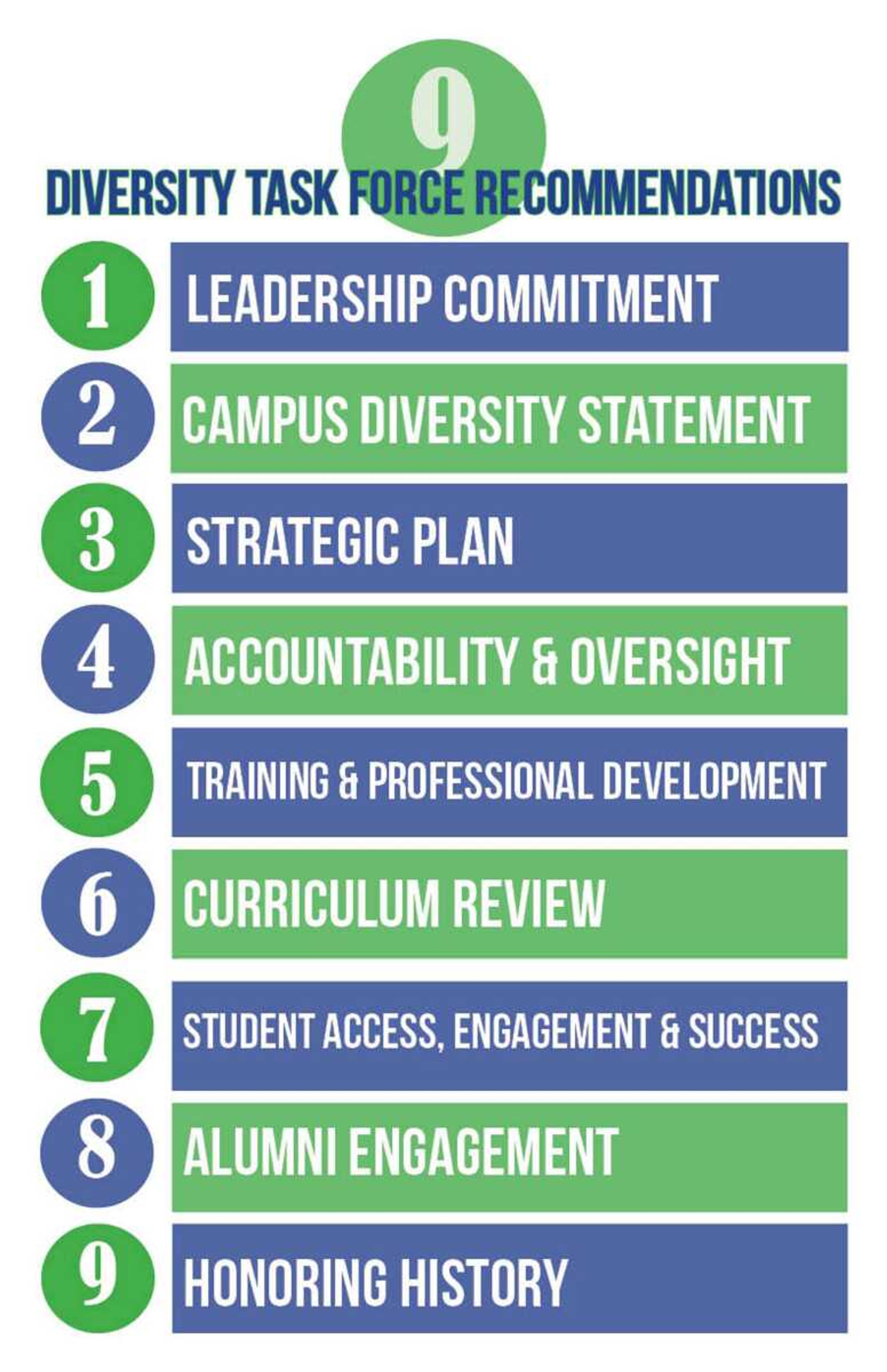Southeast's internationalization efforts increase international student enrollment for 2016 school year
Southeast Missouri State University has a mission to increase internationalization on its campus. According to Kevin Timlin, executive director of International Education and Services, the number of international students enrolled at the university has increased significantly in the past five to eight years. Just a few years ago, Southeast was home to about 200 international students. In 2015, 1,100 international students attended the university...
Southeast Missouri State University has a mission to increase internationalization on its campus.
According to Kevin Timlin, executive director of International Education and Services, the number of international students enrolled at the university has increased significantly in the past five to eight years. Just a few years ago, Southeast was home to about 200 international students. In 2015, 1,100 international students attended the university.
Timlin accredits Southeast’s growing number of international students to the previous director of International Education and Services, Zahir Ahmed, who currently holds the position of associate director of international recruitment. To recruit students to come to Southeast, Ahmed formed relationships with institutions in countries like Bangladesh, Sri Lanka, China and India, and used recruiting agents who worked in the countries to promote Southeast.
“It was really his efforts to reach out to other recruitment entities, to develop relationships in certain areas around the world — that enabled all of that growth,” Timlin said.
Timlin said Southeast is attractive to international students for many of the same reasons it is attractive to domestic students, such as affordability, available programs, the ability to engage in research and scholarships.
“Affordability is a big factor,” Timlin said. “We have the ability to offer certain scholarships for international students, we have the right kind of programs that international students are interested in, and a lot of that is the technology programs that we have. What we’ve really tried to sell ourselves on is this idea that a student can come here and be a big fish in a little pond.”
Timlin added that the size of Southeast makes it more attractive because it allows students to have one-on-one relationships with professors and allows international students more ability to do what they want to do while at school.
In order for students to come to Southeast, they must meet a number of requirements, such as an acceptable grade point average, graduation from secondary school, English proficiency and financial stability. Students who don’t make the English proficiency can participate in the Intensive English Program. IEP allows students to take 15 hours of intensive English classes that cost approximately $412 per hour. IEP students are not fully enrolled in their chosen degree program until they complete the program and the classes are not course bearing, meaning they have no impact on the students’ GPAs. Most students complete this program and meet proficiency in one semester.
International students come to Southeast with the same opportunities and resources as domestic students for academic success, but face social struggles that domestic students may not, such as cultural and communication barriers.
“In general, the struggles for international students are language,” Timlin said. “Even though they have demonstrated English proficiency, that doesn’t mean that they’re going to understand dialects, accents or slang. As U.S. people, we tend to be uncomfortable with silence, and if you can’t think of something to say, you start the small talk, and a lot of the time it’s nonsensical stuff. We have a lot of colloquialisms, a lot of idioms, that if you’ve never heard them before and translate them directly, they don’t make sense.”
Anika Hasija, a freshman from New Delhi, India, came to Southeast to join her older sister, Ankita. She said she struggles with adapting because of differences in how people interact with one another.
“People are just so open here,” Hasija said. “In India you really have to twist your words if you want to say something to somebody, but people here are very frank, and I’m just not that way. I think it’s really different for me and really hard to adapt here because of all those things, but I’m trying really hard.”
Hasija said so far her experiences at Southeast have been positive.
“It’s been really good so far,” she said. “I like how people are so welcoming and friendly. You just say ‘Hey’ to people and people want to be friends with you, so I like how it’s so easy to strike up a conversation with people over here. Because of that, I don’t miss home that much.”
Hasija said getting involved has been helpful with making friends. She is a member of the First Year Leadership Program, Residence Hall Association, the International Student Association and Alpha Xi Delta. She also is working as a student ambassador.
When it comes to culture, Hasija said many of the American customs are similar to that of her home country and her biggest fear is being accepted.
“I was really scared that I wouldn’t be accepted here,” Hasija said. “Acceptance is a really big part of who I am, and I want to be accepted wherever I go. I was kind of scared that people would not like me for who I am.”
Hasija said one of the reasons she came to Southeast was because of its world-recognized cyber security program. She said she hopes the education she receives in the United States will make her more hireable when she returns to India after graduation.
Xueer Dongfang, a senior early childhood education major from Beijing, said the resources available to international students have increased since she started her education four years ago.
“There are more people starting to care about international students now, and that makes me happy,” Dongfang said. “When I first got here, I had no clue what was going on. I didn’t even know I was supposed to register in the International Center when I first got here, but now they’re in the process of informing all the students, ‘Hey you need to do this, this, this.’”
While at Southeast, Dongfang has served as a resident assistant and in a number of education organizations. She said international students need to be involved in order to take full advantage of their time in the United States.
“There are a lot of opportunities for students to experience a lot of different things,” Dongfang said. “When we decide to come study abroad, it’s a big decision for us, and we want to fully experience here in the United States. That was one thing that made me really happy to spend my four years here. The opportunities to help and reach out and do things that I’m interested in enrich my life here in the United States.”
Dongfang said the education systems in China are very different from those in the United States. She hopes to open her own school and bring what she’s learned in the United States back to China to combine the two systems.
“I’m going to go back to China and combine the education that I think would work in China with the Chinese culture that I’ve experienced and to kind of open my own child care center,” she said.
Dongfang added that teachers in China are curriculum focused, while teachers in the United States are more student focused and better integrate technology into the classroom. She wants to bring the student-focused learning ideas back to China with her and incorporate technology more in Chinese education.
Timlin said international students have a lot to benefit from education at Southeast, but that the university has a lot to benefit from international students as well.
“To be a college educated person in the 21st century would mean that that person has international competencies, global awareness and the ability to work, collaborate and communicate with people from different parts of the world,” Timlin said.
Timlin said when both domestic and international students interact in the classroom and share experiences, it helps students learn global competencies. International students and domestic students have the ability to learn from one another and benefit from their interactions on campus.
“A university is information about everything,” Timlin said. “What I think is important to realize is that while the international students are coming here for an education and they want to get better at the language and they want to learn the culture, that the university recognizes that we have as much to learn from these students as they have to learn from us. These students are windows into the rest of the world and how things are done, how people approach things. It’s real life preparation for what students’ jobs and lives will be when they’re out of college.”
In August, Southeast was invited to participate in an internationalization laboratory by the American Council on Education. The laboratory will help the univeristy compile a comprehensive plan to increase internationalization over the next two years by recognizing opportunities and ways to better educate in the terms of internationalization and to increase global competencies among students and faculty. The program also will help the university grow the incentive for more study abroad programs for domestic students.
“This an exciting time,” Timlin said. “It’s very eminent from the upper administration of the university that this is what we want the university to be like, this is the value and this is where we’re going to concentrate a lot of our times and energies, is making sure these international things, these global things, are part of the educational experience here.”
Over the summer, university President Carlos Vargas visited Panama and Costa Rica in hopes of rebuilding relationships with alumni in Panama, as well as forming agreements between Southeast and institutions in the countries to increase the amount of recruiting of Latin American students.
According to Timlin, many countries, especially in South Asia, are beginning to see a rise in the middle class and therefore a need for higher education.
“From a national perspective, those are places that are sending a lot of students to the United States,” Timlin said. “What it really has to do with, the factors that are enabling students to seek education elsewhere, is a rise of middle class, the rise of ability to finance such an education … with the development of or the rise of a middle class is there’s more and more need for education and training and there’s more job opportunities, but these countries often don’t have a big enough of a higher education system to meet the demands for training and education of their population.”
Timlin added that while the United States has one-fifth of the population of China, the higher education system in the United States has about 10 times more universities, and many students come to the United States to get the education they desire.
Timlin wants to continue to increase resources available to international students and to increase recruitment of students in new countries. A number of resources are available to international students at the International Student Center. Domestic students interested in studying abroad also can find resources at the International Student Center on campus.

